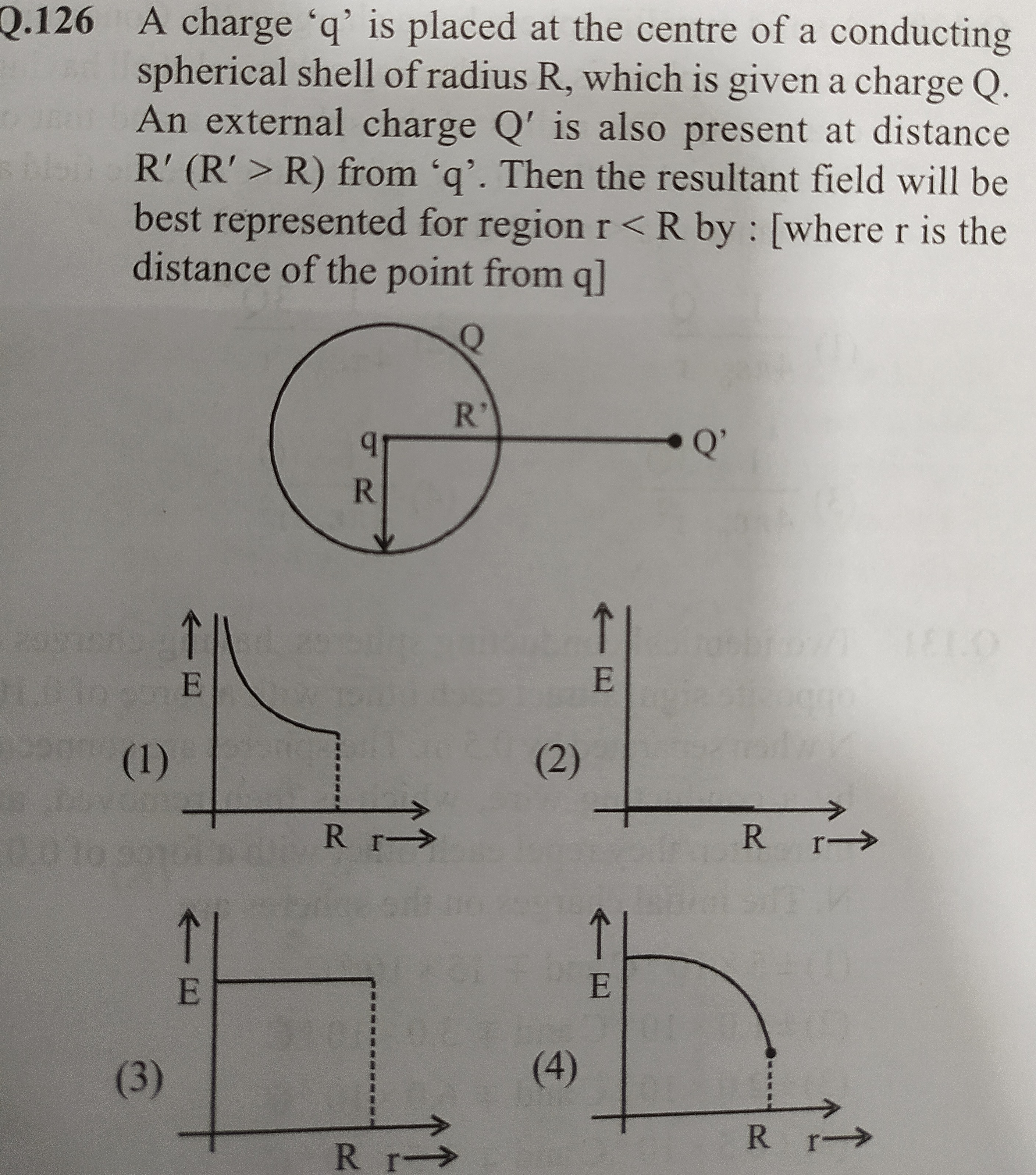Question
Question: A charge 'q' is placed at the centre of a conducting spherical shell of radius R, which is given a c...
A charge 'q' is placed at the centre of a conducting spherical shell of radius R, which is given a charge Q. An external charge Q' is also present at distance R' (R' > R) from 'q'. Then the resultant field will be best represented for region r < R by : [where r is the distance of the point from q]

↑ E
R r->
↑ E
R r->
↑ E
R r->
↑ E
R r->
For any point inside the cavity (r < R), choose a Gaussian surface. Only the charge q at the center is enclosed. Thus by Gauss’s law, the electric field is E = \frac{1}{4\pi \epsilon_0}\frac{q}{r^2} (radially outward). So the field varies as 1/r2 for r from 0 to R. At r = R, there is a sudden drop to zero inside the conductor. Among the given graphs, this 1/r2 behavior with a discontinuous drop at r = R is best represented by option (1).
Solution
For r < R, the Gaussian surface encloses only the charge q. Therefore, E=kq/r2. External charges and induced charges on the shell do not contribute inside. At r = R, the field drops to zero inside the conductor.
